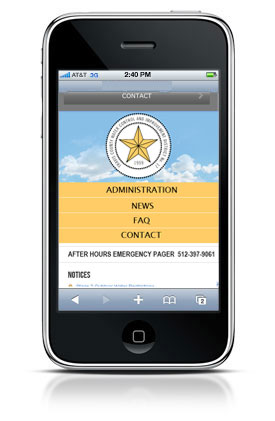Is Mobile-Friendly Design Important for My Business?


How much does it affect your business when your website was designed with only desktop computer screens in mind? Does it even matter?
The answer to this relies on a few factors, including your industry and audience type. The most important metric to know is simply How many of your visitors are using mobile devices to visit your website?
One of our customers recently reviewed their Google Analytics and noticed that out of the 1,700 visitors they had in that month, more than 50% of them were using small mobile devices or tablets. Half of their traffic was mobile. That is very significant. Imagine if those visitors were frustrated with the navigation experience; how would that impact their bottom line?
In the case of this client, their primary goal was to educate people and to gain donations for a non-profit initiative. Thankfully, the website we designed is mobile compatible and these visitors continued to show a positive browsing experience, staying on the website for about 4 minutes.
But what if the SEO statistics indicated a very high bounce rate (more than 70% for example) and a low average page time (a few seconds)? That would tell me that something is not right, and the mobile experience is probably heavily impacting the quality of the website’s ROI.
What kind of pain does your customer experience when a website is not designed for mobile?
Pretend you own a restaurant. You know that a lot of your marketing comes through social media and on-site visits to local events. But you also realize that 75% of your potential new customers are on the go when they decide to grab a bite to eat. They pull out their smartphones and start searching for local restaurants in the area.
Assuming you have great organic SEO performance, your website comes up in the search results, and the consumer clicks through. Now imagine your website was built with some supposedly fancy Flash technology that animates and makes music and shows snazzy menu pictures dancing around the screen. But your visitor sees none of that. They get a slow loading or “broken” screen, they lose interest and move on. You just lost a customer and your wait staff just lost some lunch tips.
Now imagine that you planned ahead and worked with your web designer to create a mobile-friendly design theme that is easy for the customer to quickly browse your website, find out a little about your restaurant, preview the menu and find your location. They are probably 100% more likely to actually come and eat at your establishment than if they could not see any of that information. In this ideal situation, the visitor becomes a real customer that day, you have a chance to wow them with your food and services, and they, in turn, become a repeat customer and refer some friends. A mobile-friendly website pays off quickly in this scenario.
What is the best way to design my mobile-friendly site?
There is no best way for anything in web design. Industry, audience, call-to-action goals, and other factors all play a part. Just start looking at things from your customer’s perspective. Don’t design something just because you think it is cool and trendy; design something that actually helps your customer get the information they need and do that action you want them to do. Work with an experienced web designer and developer to determine an appropriate design that is consistent with your brand and will work with your existing website technology.
Mobile web design is important.
In conclusion, mobile-friendly web design is usually important. Your website may already be mobile-friendly for the most part and you may not need to panic at all. But there is usually room for improvement to enhance the user experience on smaller devices or tablets.
There is also SEO value in mobile web design. Google prefers that sites provide easy to read content to mobile users that is consistent with the desktop version, but in a way that mobile users can access and understand it. This may involve changes in the menu navigation or font sizes, for example.
When you consider that mobile experience and make adjustments in stylesheets (CSS) or modest layout changes, it strengthens your sales and marketing.
Posted in: Austin Web Design, SEO, Web Design, Web Development, WWW Learning Center
2 responses to “Is Mobile-Friendly Design Important for My Business?”
Latest & Greatest
- Your Website is About Them, Not You: Digital Customer Experience
- Google Business Profile 101: How to Use it & SEO Benefits for Your Local Business
- The Power of Intentional Website Branding
- Competitive SEO Analysis: How to Keep an Eye On the Competition from an SEO Texas Agency
- Optimizing Your Online Registration Design for Better User Engagement
- Best Free Video Editing Software for Mac
- The Basics for Making Your Website More Accessible

I actually prefer not to have mobile sites on my phone. Many of them omit the info I’m looking for. Often links to a specific page get intercepted by the mobile version and take you somewhere else, making it difficult to find what you’re looking for. Personaly, I find navigating sites designed for desktops to be easy to do on my phone. Do I have a mobile version on my site? Yes, but I make it easy to switch to the desktop site.
Thanks for your comment, Larry! I also find myself getting frustrated when a mobile website is too trimmed down and there is a sore lack of information. However I am much more frustrated when I can’t see the website at all because it simply is not compatible with iphone, ipad, and small devices.